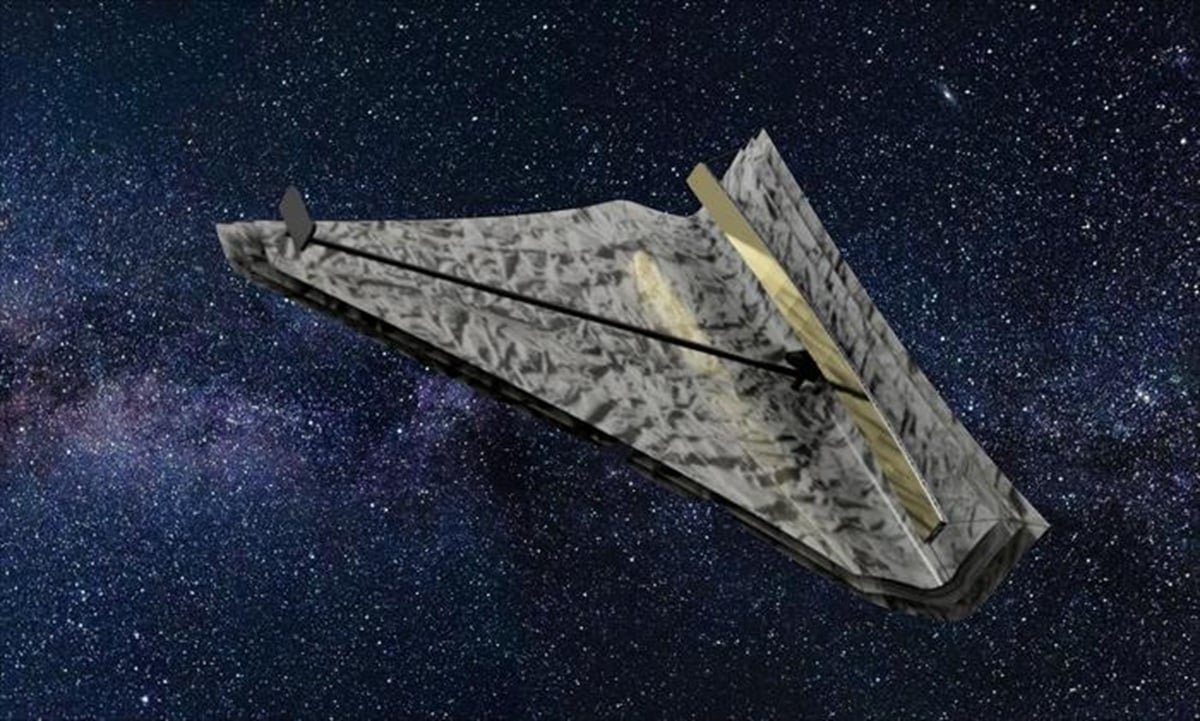By Gina Hill | Alaska Headline Living | November 2025
Meet the next must-have spacecraft: the orbital janitor poised to save satellites, astronauts, and the future of spaceflight … Men at Work style.

Picture this: Charlie Sheen and Emilio Estevez, hard hats on, reflective vests slightly singed from cosmic radiation, driving a massive “space garbage truck” past tumbling rocket stages, dead satellites, and enough floating screws to give NASA engineers nightmares. If Men at Work taught us anything, it’s that no trash job is too big, and apparently, now it extends to orbit. Imagine a new Men at Work sequel: Space Junk.
Yes, space is cluttered. Really cluttered. Millions of pieces of debris are whizzing around Earth at breakneck speed, and even tiny bits can punch holes in spacecraft or satellite panels. So far, humans have mostly just been dodging it. Enter our heroes, or rather, a fleet of futuristic orbital garbage trucks — ready to clean up the mess, Men at Work-style.
Why we need cleanup crews and not just the “call your mom for help” kind
The Chinese astronauts on the Shenzhou 20 mission found this out the hard way when their return capsule was likely struck by a fragment of orbital debris. Fortunately, they weren’t sent packing like a clumsy janitor in a slapstick sitcom, but the close call underscores the urgent need for real cleanup — before a chain reaction of collisions turns space into a cosmic junkyard.
Enter the Orbital Sanitation Fleet (OSF). Think Men at Work meets NASA, armed with nets, harpoons, robotic arms, and just enough charm to make space safety fun.
The Fleet: Men at Work meets space janitors
1) Scout Drones (the “bin-inspectors”)
Tiny robots zip around orbit like Emilio Estevez on espresso, scanning for the messiest debris and reporting back with photos that are hopefully better than Sheen’s selfies from 1986. Their job: find the worst offenders — spinning satellites, floating rocket stages — and point the garbage trucks in the right direction.
2) Capture Drones (the “handy pickup trucks”)
These little guys throw nets, harpoons, or extend mechanical arms to grab medium-sized junk, all while making clever quips that would make Charlie Sheen proud. They either tow the debris directly to a disposal orbit or hand it off to the big trucks for a dramatic, high-altitude finale.
3) Garbage Trucks (the “big, reusable servicers”)
The pièce de résistance: Massive, robotic garbage trucks, fully armed with arms, tethers, and drag sails. Picture Sheen and Estevez careening past tumbling satellites, struggling to secure a harpoon while cracking jokes and narrowly avoiding collision. They can:
- Push objects into controlled re-entry corridors over oceans
- Attach drag sails to speed orbital decay
- Park debris in a “graveyard orbit” for later pickup
Basically, think Men at Work in zero gravity, with way higher stakes and slightly more radiation.
4) Optional: The Recycling Hub
Eventually, the fleet could even harvest propellant and components from big debris. Think of it as the space version of reusing old office chairs — except now your office is the entire planet’s orbit and the chairs are multi-ton rocket stages.
Supporting Tech With Slapstick Potential
- Nets & harpoons: Because sometimes, you just need to lasso that runaway satellite, preferably without accidentally snagging your buddy.
- Robotic arms & grapples: Perfect for precision work, or for dramatically flinging a space soda can into a safe orbit while yelling, “Watch this!”
- Drag sails & electrodynamic tethers: Like a cosmic leaf blower, slowly pushing junk toward re-entry.
- Laser nudging: Ground-based lasers can give tiny pushes, sort of like a polite “excuse me” to keep debris in line.
All while our Men at Work-style crew keeps the banter flowing.
The Mission Scenario: Comedy and Chaos in Orbit
- Scout drones identify the messiest areas in LEO.
- Capture drones attempt the grab, occasionally missing and prompting classic Charlie Sheen eye-roll moments.
- Garbage trucks swoop in, grapple the big stuff, and either fling it into controlled re-entry or park it safely, hopefully without taking out a satellite in the process.
- All telemetry is reported back to mission control, where scientists try not to laugh at the Sheen/Estevez commentary over comms.
Seriously, Why This Works (besides laughs)
- Scalable: many scouts, some capture drones, a few big trucks.
- High-impact: the biggest threats get the biggest attention.
- Fun factor: who wouldn’t want to watch Charlie Sheen struggle with a runaway upper stage in zero-G while cracking jokes?
It’s both practical and entertaining. A clean orbit and a comedy in space, all rolled into one.
Final Thoughts

Space junk isn’t just a nuisance, it’s a serious threat. But if we can imagine a Men at Work–style orbital cleanup crew, maybe we can also imagine solutions that are practical, daring, and a little ridiculous. Because whether it’s Sheen, Estevez, or a robotic garbage truck, someone has to get the job done before orbit becomes the ultimate cosmic landfill.




